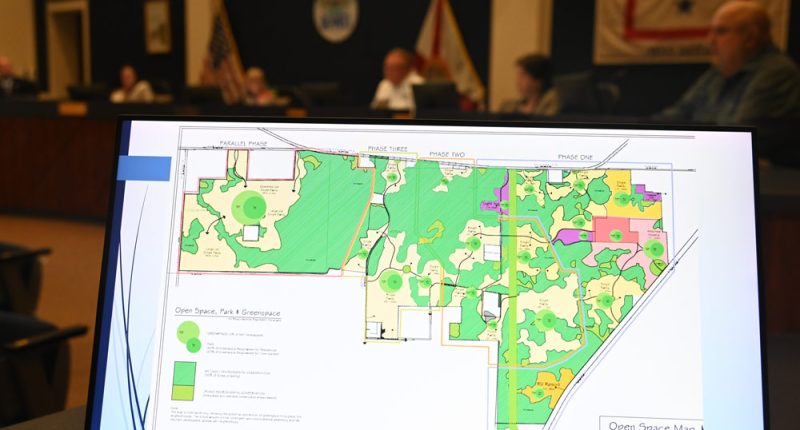
Eight thousand new houses and apartments for Bunnell? Or 5,500? Plus a small town of 800 RV sites?
The development agreement for the controversial 8,000-house development and 800 RV sites known The Reserve at Haw Creek goes before as Bunnell City Commission Monday evening. The controversial proposal–the single largest development in Flagler County’s history after ITT started Palm Coast in the late 1960s–coincides with an ongoing backlash against rapid and intense development in nearby Palm Coast. The outcome of Monday’s meeting is uncertain.
The proposed development by Jacksonville-based Northeast Florida Developers, would sprawl between State Road 11, SR 100, County Road 302 and CR 65. The majority of residents in and around that perimeter are opposed to the enormity of the development and the city’s regulatory light had so far.
Residents who have spoken before the city’s planning board and the commission since last year have raised issues about the disproportionality of the development relative to the city: it would increase the city’s population six or sevenfold at buildout. They have raised concerns about flooding, traffic, environmental protection and the character of their town and county. They have been frustrated by the city’s response.
“We’ve had a lot of citizens who have been lifelong residents of Bunnell come out with their concerns with the magnitude of this project,” Vice Mayor John Rogers said, “and they kind of feel like their concerns weren’t heard, and that concerns me. Bunnell, we do need growth, but we need smart growth, sustainable growth, and I’m not opposed to development. But 9,000 rooftops is too many for our community.”
Rogers may have been including the RVs in his calculation, though when the developers first proposed The Reserve only last year, they placed the number of houses at 6,000. That was the number their representative gave the City Commission in May 2024. Somehow, it jumped to 8,000 months later.
The commission in December rejected the developer’s request to lower the proportion of green space in the development from 60 percent to 50 percent, only to summarily approve an earlier version of a proposed development order weeks later. The Bunnell planning board in January recommended approval of the planned unit development, but with conditions: lower the total number of housing units by 2,500, to 5,500.
Two actions are before the commission Monday evening: the ordinance that would rezone the 2,800 acres to a planned unit development (it would be the first reading), and the development agreement.
The development order before the City Commission calls for 8,000 housing units, an 800-site RV resort on 15 to 80 acres, 440,000 square feet of commercial and retail space (that’s just 10 acres), 775,000 square feet of industrial (18 acres), 15 to 70 acres for light industrial uses, a minimum of 4 acres set aside for a fire house, 8 acres for public services, and 1,115 set aside for conservation.
“The Reserve at Haw Creek PUD,” the city’s staff report summarizes, “is proposed to be an integrated master planned mixed-use community including residential, commercial, light industrial, emergency support services, parks and recreation, and conservation. The community will include housing types ranging from affordable to market rate housing, consisting of attached and detached single-family residences to townhomes, garden homes, and condominiums. A village center is proposed in the eastern portion of the subject development that will provide a mixture of neighborhood and community services, retail and commercial spaces, parks and trails, public services, and amenities. The development will be adjacent to and expand the current urban core of the city.”
City staff is recommending approval of both. But it’ll be up to the five commissioners to decide the development’s fate. Two of the five, elected in March–David Atkinson and Dean Sechrist– will be considering the proposal for the first time. The staff did not make the traffic study available on its website, with the rest of the background material, though it is available at the city, upon request, and has been distributed to commissioners.
“Growth, change is inevitable,” Rogers said, “but we as the board, as the elected officials, have to be the gatekeepers of our community.”
![]()
Click On:
|










